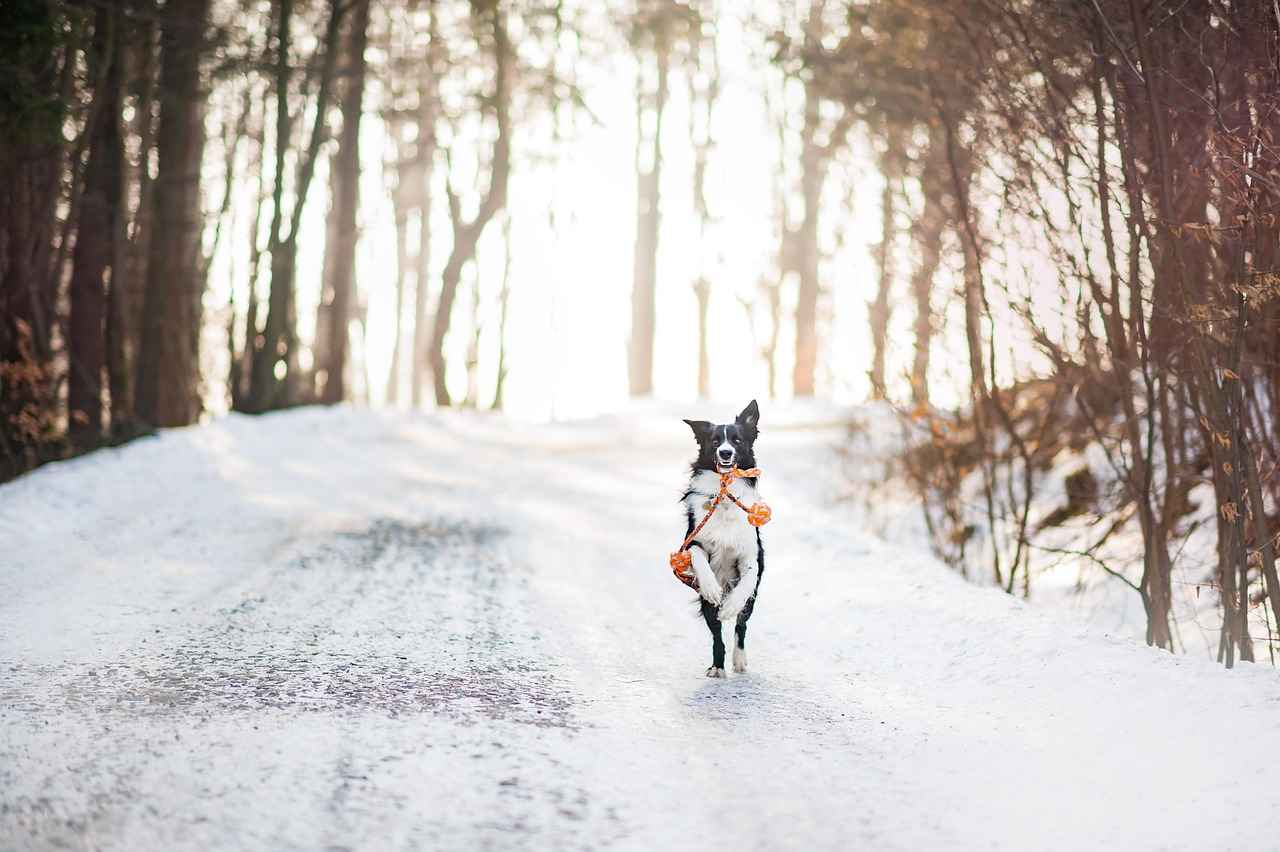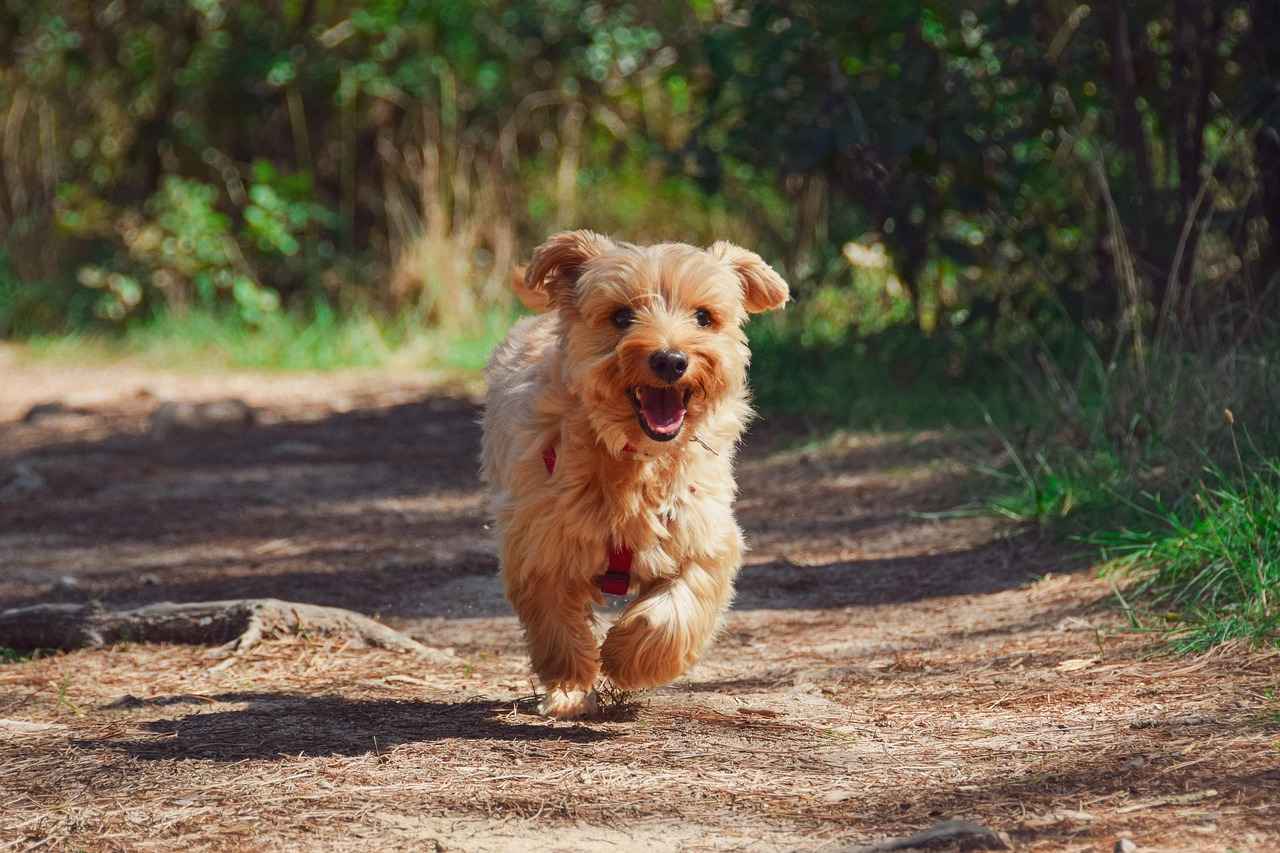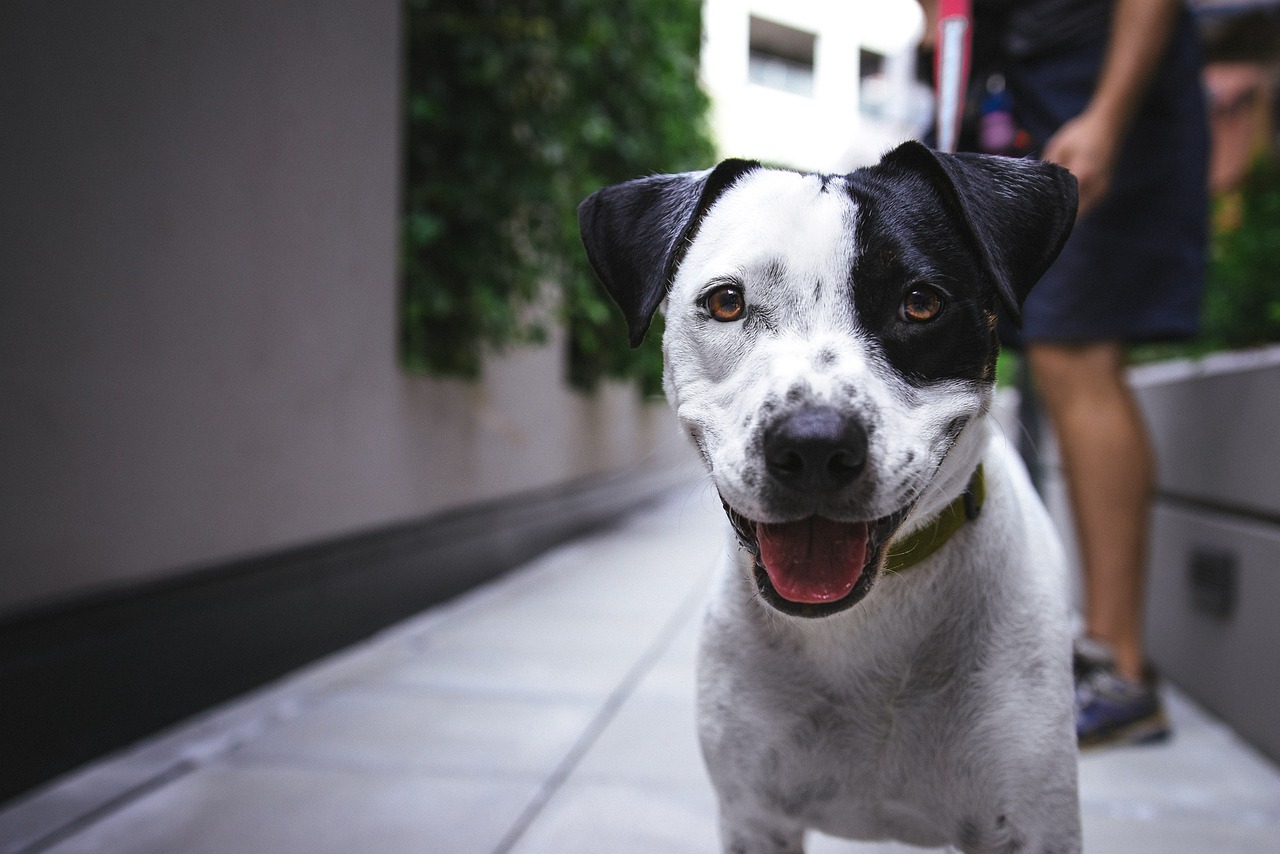This article delves into the benefits, various types, and essential considerations of dog stairs specifically designed for high beds. By ensuring your furry friend can easily access their sleeping space, you can promote their comfort and prevent potential injuries.
Why Dog Stairs Are Essential for High Beds
Understanding the necessity of dog stairs is crucial, especially for owners of small or elderly breeds. High beds can pose a significant challenge for these dogs, leading to stress and potential injuries when attempting to jump up or down.
Types of Dog Stairs Available
There is a range of dog stairs available, catering to different needs:
- Wooden Dog Stairs: Known for their durability and aesthetic appeal, wooden stairs offer a sturdy option that complements home decor.
- Foldable Dog Stairs: Ideal for those who travel or have limited space, these stairs can be easily stored and set up as needed.
- Plastic Dog Stairs: Lightweight and often more affordable, plastic stairs are easy to clean and transport.
Factors to Consider When Choosing Dog Stairs
Selecting the right stairs involves several considerations:
- Height and Size: Ensure the stairs match the bed’s height and are appropriately sized for your dog’s breed.
- Material and Durability: Choose materials that offer both safety and longevity, balancing aesthetics with functionality.
How to Train Your Dog to Use Stairs
Training is key to helping your dog use their new stairs:
- Positive Reinforcement: Use treats and praise to encourage your dog to approach and use the stairs.
- Gradual Introduction: Allow your dog to acclimate slowly, starting with short sessions to build confidence.
Safety Tips for Using Dog Stairs
To ensure your dog’s safety, consider the following:
- Stability and Non-Slip Features: Choose stairs with a stable base and non-slip surfaces to reduce the risk of accidents.
- Regular Maintenance Checks: Inspect the stairs regularly for any wear and tear to maintain safety.
Benefits of Using Dog Stairs
The advantages of dog stairs extend beyond mere convenience:
- Improved Mobility for Older Dogs: Stairs can enhance the independence of older dogs by making it easier for them to access higher surfaces.
- Prevention of Injuries: By using stairs, dogs can avoid the risks associated with jumping, such as strains or more severe injuries.
Conclusion: Enhancing Your Dog’s Comfort and Safety
In conclusion, investing in dog stairs for high beds is a smart choice for pet owners. They not only enhance your dog’s comfort but also ensure their safety, allowing your furry friend to enjoy their sleeping space without the risk of injury.

Why Dog Stairs Are Essential for High Beds
When it comes to providing a comfortable living environment for our pets, understanding the significance of dog stairs for high beds is crucial. These specially designed stairs not only enhance accessibility but also promote safer sleeping arrangements for dogs, particularly for breeds that are small or elderly.
As dogs age or if they belong to smaller breeds, their physical capabilities may decline, making it challenging for them to jump onto or off high surfaces. This is where dog stairs become essential. They offer a practical solution that allows pets to navigate their environment with ease, reducing the risk of accidents and injuries.
Moreover, dog stairs can significantly improve the quality of life for older dogs. By providing them with a means to access their favorite spots, such as the bed or couch, owners can help maintain their independence. This is particularly important for dogs suffering from arthritis or other mobility issues, as it enables them to move around without the fear of falling or straining themselves.
Additionally, dog stairs can help prevent injuries that often occur when dogs attempt to jump down from high places. Such actions can lead to serious health concerns, including sprains, strains, or even fractures. By investing in dog stairs, pet owners can create a safer environment that minimizes these risks.
In conclusion, dog stairs are not merely a convenience; they are an essential tool for ensuring the well-being of our furry companions. By understanding their importance, pet owners can make informed decisions that enhance their dogs’ comfort and safety, allowing them to enjoy their sleeping spaces without unnecessary stress.

Types of Dog Stairs Available
When it comes to ensuring that your furry friend can easily access high beds, dog stairs are a crucial accessory. They come in a variety of designs and materials, catering to different needs and preferences. Understanding the different types of dog stairs available on the market can help you make an informed decision for your pet.
- Wooden Dog Stairs: These stairs are known for their durability and aesthetic appeal. They provide a sturdy option that can blend seamlessly with your home decor. Wooden stairs often feature a polished finish and can support larger breeds, making them a popular choice among pet owners.
- Foldable Dog Stairs: Ideal for pet owners who need a portable solution, foldable stairs can be easily stored when not in use. They are perfect for travel or for those living in small spaces. Their lightweight design allows for easy transport, making them a practical choice for on-the-go pet owners.
- Plastic Dog Stairs: Lightweight and often more affordable, plastic stairs are easy to clean and maintain. They come in various colors and designs, making them a fun addition to your pet’s space. However, it’s essential to ensure that they are sturdy enough to support your dog’s weight.
- Carpeted Dog Stairs: These stairs provide extra grip and comfort for your dog, making them an excellent choice for pets that may be hesitant to use stairs. The carpeted surface can help prevent slips, ensuring a safer experience for your furry friend.
- Customized Dog Stairs: For pet owners with specific needs, customized stairs can be designed to fit the exact height and width required. This option allows for a perfect fit, ensuring that your dog can access their bed safely and comfortably.
In conclusion, the variety of dog stairs available ensures that every pet owner can find a suitable option for their furry friend. Whether you prioritize aesthetics, portability, or safety features, there is a design that can meet your needs.
Wooden Dog Stairs
are an excellent choice for pet owners looking to provide their furry friends with safe and stylish access to high beds. These stairs combine durability with aesthetic appeal, making them a favored option in many homes. Unlike plastic or metal alternatives, wooden stairs can seamlessly blend into your home decor, enhancing the overall look of your living space.
One of the primary advantages of wooden dog stairs is their sturdiness. Crafted from high-quality wood, these stairs can support dogs of various sizes, ensuring that even larger breeds can use them without risk of collapse. Additionally, the natural texture of wood provides a non-slip surface, which can help prevent accidents as your dog climbs up or down.
When considering wooden dog stairs, it’s essential to look for features that enhance safety and usability. For instance, some models come with anti-slip treads or carpeted surfaces that provide extra grip. Furthermore, the height and width of the stairs should be appropriate for your dog’s size, allowing for comfortable use without straining their joints.
- Versatile Designs: Wooden stairs are available in various designs, from classic to modern, ensuring that you can find a style that complements your home.
- Easy Maintenance: Wooden stairs can be easily cleaned and maintained, requiring only occasional polishing or sealing to keep them looking new.
- Environmentally Friendly: Many wooden stairs are made from sustainable sources, making them a more eco-friendly choice compared to plastic alternatives.
In conclusion, wooden dog stairs are a practical and stylish solution for pet owners with high beds. They not only provide convenience and accessibility for your pet but also enhance the beauty of your home. Investing in a quality set of wooden stairs can significantly improve your dog’s quality of life, allowing them to navigate their environment safely and comfortably.
Foldable Dog Stairs
are an innovative solution designed for pet owners who seek versatility and convenience. These stairs are particularly beneficial for dogs that need assistance reaching higher surfaces, such as beds or couches. Their portable design allows them to be easily transported and stored, making them an excellent choice for those with limited space or who travel frequently.
One of the main advantages of foldable dog stairs is their space-saving capability. When not in use, these stairs can be collapsed and tucked away neatly, freeing up valuable floor space in your home. This feature is especially useful for apartment dwellers or anyone living in smaller environments where every inch counts.
Additionally, foldable dog stairs are often lightweight, which enhances their portability. Whether you are heading to a friend’s house or taking a road trip, these stairs can be packed easily into your vehicle. Their ease of use means that you can set them up quickly whenever your dog needs assistance.
In terms of design, many foldable dog stairs feature non-slip surfaces and sturdy construction to ensure your pet’s safety. It is crucial to select stairs that provide a secure grip and stability to prevent accidents. Some models even come with adjustable heights, allowing you to customize them according to your dog’s needs and the height of the surface they are accessing.
Moreover, these stairs are available in various materials, including plastic and wood, catering to different aesthetic preferences and durability requirements. When choosing foldable dog stairs, consider the weight capacity and the size of your dog to ensure a perfect fit.
In conclusion, foldable dog stairs are a practical and efficient solution for pet owners looking to enhance their furry friends’ accessibility to high places. With their convenience, safety features, and adaptability, they are an essential addition to any pet-friendly home.

Factors to Consider When Choosing Dog Stairs
When selecting the appropriate stairs for your dog, it is essential to consider several key factors that will ensure both safety and comfort. Making an informed choice can significantly enhance your pet’s quality of life, especially for those with mobility issues or small breeds.
- Height of the Stairs: The stairs must align with the height of your bed or the surface your dog needs to reach. Measure the height accurately to select stairs that provide a safe ascent and descent.
- Weight Capacity: Each set of dog stairs comes with a specified weight limit. It is crucial to choose stairs that can comfortably support your dog’s weight to prevent accidents or injuries.
- Ease of Use: Look for stairs that are easy for your dog to navigate. Features like wide steps and gentle inclines can make a significant difference, especially for older or smaller dogs.
- Material and Stability: The material of the stairs affects both durability and traction. Non-slip surfaces are vital for preventing slips, while sturdy construction ensures stability during use.
- Portability: If you plan to move the stairs frequently, consider foldable or lightweight options. This flexibility allows you to store them conveniently when not in use.
By carefully considering these factors, you can select the ideal stairs for your dog. This investment not only enhances their accessibility but also contributes to their overall well-being.
Height and Size of the Stairs
When selecting dog stairs, one of the most critical aspects to consider is the . This feature is essential not only for the comfort of your furry friend but also for their safety. The height of the stairs should ideally match the height of the bed. This alignment ensures that your dog can access their sleeping area without the risk of injury that can arise from jumping or straining themselves.
Moreover, it is important to ensure that the dimensions of the stairs accommodate your dog’s breed and size comfortably. For instance, a small breed dog will require stairs that are proportionate to their height and weight, while larger breeds may need sturdier options that can support their weight without wobbling or collapsing. A staircase that is too steep or narrow can lead to hesitation or fear, making it less likely for your dog to use them effectively.
- Consider Your Dog’s Size: Always measure your dog to select stairs that are appropriate for their size. This can help prevent accidents and ensure a more enjoyable experience.
- Height Compatibility: Ensure the stairs are not too high or too low compared to the bed. Ideally, they should provide a gradual incline that is easy for your dog to navigate.
- Width and Depth: The stairs should be wide enough for your dog to comfortably place their paws without slipping off the edges. A depth that allows for a secure footing is also crucial.
In conclusion, the play a vital role in ensuring that your dog can safely and comfortably access their bed. By choosing the right dimensions, you can help your pet maintain their independence and avoid potential injuries.
Material and Durability
play a crucial role in the selection of dog stairs for high beds. The choice of material not only affects the longevity of the stairs but also impacts the overall safety of your pet.
When considering dog stairs, you will encounter various materials, each with unique benefits and drawbacks:
- Wood: Wooden stairs are often favored for their sturdiness and visual appeal. They can withstand significant weight and provide a stable surface for pets to climb. Additionally, wooden stairs can be customized to match your home decor, making them an attractive option. However, they may require regular maintenance to prevent wear and tear.
- Plastic: Lightweight and easy to move, plastic stairs are a practical choice for pet owners who need portability. They are generally less expensive than wooden options and are often designed with non-slip surfaces for added safety. However, plastic may not support heavier dogs as effectively as wood, potentially compromising durability.
- Metal: Metal stairs are known for their robustness and can handle substantial weight. They are often coated to prevent rust and can be a good option for outdoor use. However, metal can be slippery, so ensuring they have a non-slip surface is vital for your pet’s safety.
- Fabric: Some dog stairs come with a soft fabric covering, providing extra comfort for your pet. These stairs are usually foldable and easy to store, making them ideal for travel. However, they may not offer the same level of support as harder materials.
In summary, selecting the right material for dog stairs is essential for ensuring durability and safety. Consider your dog’s size, weight, and specific needs when making a choice. By investing in the appropriate material, you can enhance your dog’s access to their favorite sleeping spot while minimizing the risk of injury.

How to Train Your Dog to Use Stairs
Training your dog to use stairs is not just about convenience; it plays a crucial role in enhancing their confidence and ensuring their safety. Whether your dog is small, elderly, or simply hesitant, following a structured approach can make this process smoother and more enjoyable for both of you. Here are some effective strategies to encourage your pet to navigate their new stairs with ease.
1. Create a Positive Environment
- Use Treats and Praise: Positive reinforcement is key. Reward your dog with treats and verbal praise whenever they approach or use the stairs. This creates a positive association with the steps.
- Keep Sessions Short: Initially, limit training sessions to just a few minutes to prevent overwhelming your dog. Gradually increase the duration as they become more comfortable.
2. Gradual Introduction
Start by allowing your dog to explore the stairs without any pressure. Here’s how:
- Familiarization: Allow your dog to sniff around the stairs while they are stationary. This helps them understand that the stairs are part of their environment.
- Encourage Step-by-Step: Use a leash to guide your dog gently up and down a few steps. Always ensure that they feel secure and supported during this process.
3. Consistent Practice
Regular practice is essential for success. Incorporate stair usage into your daily routine:
- Daily Training: Aim for short, daily training sessions to reinforce their learning.
- Use Commands: Teach your dog specific commands like “up” and “down” to help them understand what you expect.
4. Monitor Progress
Every dog learns at their own pace. Observe their behavior and adjust your training techniques as needed. Celebrate small victories to keep your dog motivated.
In conclusion, with patience and the right techniques, you can successfully train your dog to use stairs confidently. This not only enhances their independence but also contributes to their overall well-being.
Positive Reinforcement Techniques
are essential tools for training your dog to use stairs confidently. By utilizing treats and praise, you can create a motivating environment that encourages your furry friend to approach the stairs without fear. This method not only builds their confidence but also fosters a positive association with the stairs, making them feel safe and secure.
To begin, it’s important to choose the right treats. Select something your dog loves, whether it’s small pieces of their favorite kibble or special dog treats. The key is to ensure that the treats are small enough to be given frequently without overwhelming your dog. This will keep their focus on the task at hand: mastering the stairs.
Start by placing the treats near the base of the stairs. Encourage your dog to approach by using an enthusiastic tone and calling their name. When they show interest and take a step toward the stairs, immediately reward them with a treat and lots of verbal praise. This encourages them to view the stairs as a positive experience.
As your dog becomes more comfortable, gradually move the treats up a step. Continue to reward them for each step they take. If your dog hesitates or seems unsure, take a step back and allow them to acclimate to the stairs at their own pace. Patience is vital; forcing them can create anxiety and hinder progress.
Incorporating short training sessions into your daily routine can also be beneficial. Aim for a few minutes each day, which allows your dog to learn without feeling overwhelmed. Over time, as they gain confidence, you can reduce the frequency of treats while continuing to offer praise for their progress.
In conclusion, using positive reinforcement techniques not only helps your dog learn to use stairs but also strengthens your bond with them. With consistent practice and encouragement, your dog will approach the stairs with confidence, ensuring they can access their favorite resting spots safely and happily.
Gradual Introduction to Stairs
When it comes to helping your dog adapt to using stairs, a gradual introduction is key. This method not only eases your pet into the experience but also helps reduce any anxiety or fear they may have about the stairs. Here are some effective strategies to ensure a smooth transition for your furry friend.
- Start Small: Begin by allowing your dog to explore the stairs while they are stationary. This can be done by placing the stairs in a comfortable area where your dog feels safe.
- Short Sessions: Limit the initial exposure to just a few minutes. Allow your dog to sniff around and get familiar with the stairs without the pressure of having to climb them immediately.
- Positive Reinforcement: Use treats and praise to encourage your dog when they show interest in the stairs. Each time they approach or step onto the stairs, reward them to create a positive association.
- Increase Exposure Gradually: As your dog becomes more comfortable, gradually increase the time spent near the stairs and encourage them to take one or two steps at a time. This slow progression helps build confidence.
- Monitor Body Language: Pay close attention to your dog’s reactions. If they seem hesitant or scared, take a step back and allow them more time to adjust.
By following these steps, you can ensure that your dog becomes accustomed to using stairs without feeling overwhelmed. This gradual approach not only fosters a sense of security but also strengthens the bond between you and your pet as you support them through this learning process.
Ultimately, the goal is to make the experience as enjoyable and stress-free as possible. With patience and persistence, your dog will soon navigate the stairs like a pro, enhancing their independence and comfort in your home.

Safety Tips for Using Dog Stairs
Ensuring your dog’s safety while using stairs is crucial. Proper precautions can prevent accidents and injuries, allowing your furry friend to navigate their environment confidently. Here are some essential safety tips to consider when using dog stairs:
- Choose the Right Stairs: Select stairs that are appropriate for your dog’s size and weight. Ensure they are designed to support your pet’s weight without wobbling or collapsing.
- Check Stability: Before allowing your dog to use the stairs, make sure they are stable and securely positioned. A sturdy base is vital to prevent any tipping.
- Non-Slip Surfaces: Opt for stairs with non-slip treads or surfaces. This feature can significantly reduce the risk of slips, especially in dogs that may be prone to losing their footing.
- Regular Maintenance: Conduct routine checks on the stairs for any signs of wear and tear. Regular maintenance ensures that the stairs remain safe for your pet to use.
- Supervise Usage: Always supervise your dog when they are using the stairs, especially during the initial stages of training. This supervision can help prevent accidents and provide assistance if needed.
- Positive Reinforcement: Use treats and praise to encourage your dog to use the stairs. Positive reinforcement can help them associate the stairs with good experiences.
- Gradual Introduction: Introduce your dog to the stairs gradually. Allow them to explore and become familiar with the stairs at their own pace to avoid overwhelming them.
- Consider Age and Health: For older dogs or those with health issues, ensure that the stairs are not too steep and are easy to navigate. Providing additional support, like a harness, can also be beneficial.
By following these safety tips, you can create a secure environment that allows your dog to use stairs confidently and safely. Remember, the goal is to enhance your dog’s mobility while preventing any potential injuries.
Stability and Non-Slip Features
When it comes to ensuring the safety of your dog while using stairs, stability and non-slip surfaces are paramount. These features play a crucial role in minimizing the risk of slips and falls, which can lead to serious injuries for your furry friend.
First and foremost, a stable base is essential. Stairs that are designed with a wide and sturdy foundation provide a solid grip on the floor, preventing any unwanted movement during use. This stability is particularly important for dogs of all sizes, but especially for small breeds or older dogs that may have difficulty balancing.
Moreover, the surface of the stairs should be equipped with non-slip materials. Many manufacturers utilize textured surfaces or rubber grips to enhance traction. This is vital because dogs can easily lose their footing on smooth surfaces, especially when they are excited or in a hurry. A non-slip surface gives them the confidence to ascend and descend safely.
| Feature | Importance |
|---|---|
| Stable Base | Prevents movement and wobbling, ensuring safety during use. |
| Non-Slip Surface | Reduces the risk of slips and falls, providing secure footing. |
In addition to these features, it’s advisable to regularly inspect the stairs for any signs of wear or damage. Over time, even the best materials can degrade, so ensuring that the stairs remain in optimal condition is key to maintaining safety.
In conclusion, selecting dog stairs with a stable base and non-slip surfaces is not just a matter of convenience; it is a fundamental aspect of pet safety. By prioritizing these features, you can create a secure environment that allows your dog to enjoy their space without the fear of accidents.
Regular Maintenance Checks
are a critical aspect of ensuring the safety and longevity of dog stairs. Just as you would routinely inspect your home for potential hazards, it is equally important to assess the condition of any equipment your pet uses. This proactive approach not only keeps your furry friend safe but also enhances their overall experience when using the stairs.
Over time, wear and tear can occur due to daily use. Factors such as humidity, temperature fluctuations, and the weight of your pet can contribute to the deterioration of the stairs. Regular inspections allow you to identify any signs of damage, such as:
- Cracks or Splits: Wooden stairs may develop cracks, while plastic stairs can become brittle.
- Loose Steps: Ensure that each step is securely attached to prevent accidents.
- Worn Non-Slip Surfaces: Check that the non-slip features are intact to avoid slips.
During your maintenance checks, consider the following steps:
- Visual Inspection: Look for any visible damage or wear.
- Stability Test: Gently shake the stairs to ensure they are stable and secure.
- Clean Regularly: Remove any debris or pet hair that could cause slipping.
By keeping a close eye on the condition of your dog’s stairs, you can ensure that they remain a safe and reliable option for your pet. This not only helps prevent accidents but also encourages your dog to use the stairs confidently, knowing they are secure.
In conclusion, prioritizing regular maintenance checks for dog stairs is essential for safeguarding your pet’s well-being. By taking these steps, you can create a safe environment that allows your furry friend to enjoy their high bed without risk.

Benefits of Using Dog Stairs
The advantages of using dog stairs extend well beyond mere convenience, offering numerous benefits that enhance the quality of life for both pets and their owners. Providing dog stairs can significantly improve accessibility, safety, and overall well-being for your furry friend.
- Enhanced Accessibility: Dog stairs allow pets, especially those with mobility challenges, to reach high places like beds and sofas without straining themselves. This is particularly beneficial for small breeds or older dogs who may struggle with jumping.
- Reduced Risk of Injury: Jumping down from high surfaces can lead to serious injuries, including fractures and sprains. By using stairs, dogs can safely navigate their environment, minimizing the risk of accidents.
- Promotes Independence: For dogs that are aging or have physical limitations, stairs provide a means to maintain their independence. They can access their favorite spots without relying on their owners for assistance.
- Improved Joint Health: Regularly using stairs can help maintain and improve joint health in dogs. It encourages gentle exercise, which is crucial for keeping their muscles and joints strong and flexible.
- Convenience for Owners: Having dog stairs means less lifting and carrying for pet owners, making it easier to manage daily routines. This is especially helpful for larger breeds that can be cumbersome to lift.
In conclusion, investing in dog stairs is a practical decision that enhances both safety and comfort for your pet. By providing a secure and easy way for dogs to access their favorite spots, owners can ensure their furry companions enjoy a happier and healthier life.
Improved Mobility for Older Dogs
As dogs age, they often face a variety of physical challenges that can affect their mobility and overall quality of life. For older dogs or those with mobility issues, the introduction of dog stairs can significantly enhance their ability to navigate their environment. These stairs provide a practical solution for helping your furry friend access high places, such as beds or couches, without the strain of jumping.
By using dog stairs, you can help maintain your pet’s independence. This is especially crucial for senior dogs who may experience joint pain or stiffness. Rather than relying on their owners for assistance, stairs allow them to climb up and down on their own, promoting a sense of autonomy.
Additionally, dog stairs can play a vital role in preventing injuries. Jumping down from heights can lead to serious injuries, including sprains, fractures, or exacerbation of existing health conditions. By providing a safe and stable means for your dog to reach their favorite resting spots, you can help reduce the risk of these accidents.
Moreover, the use of dog stairs can also contribute positively to your pet’s mental well-being. The ability to access their favorite spots without assistance can boost their confidence, allowing them to engage more freely with their surroundings. This can lead to increased activity levels and a more fulfilling life.
In summary, dog stairs are not just a convenience; they are an essential tool for enhancing the mobility and overall quality of life for older dogs. By investing in this simple solution, you can ensure that your beloved pet remains active, safe, and independent well into their golden years.
Prevention of Injuries
Ensuring the safety of our beloved pets is a priority for any responsible dog owner. One of the significant risks associated with high beds is the potential for injuries when dogs attempt to jump down. This behavior can lead to a variety of injuries, including strains, sprains, or even fractures. By providing dog stairs, owners can significantly reduce these risks and create a safer environment for their furry companions.
When dogs jump from high surfaces, they are subjected to a sudden impact that can be harmful, especially for breeds that are small or have pre-existing health conditions. Using stairs offers a gentle and controlled way for dogs to access their favorite spots without the danger of falling or landing awkwardly. This is particularly crucial for elderly dogs or those suffering from arthritis, as their joints are more vulnerable to injury.
- Reduced Strain on Joints: Stairs allow dogs to move up and down without the jarring impact of jumping, which can exacerbate joint issues.
- Enhanced Stability: Many dog stairs come with non-slip surfaces, providing better grip and stability, reducing the likelihood of accidents.
- Encouragement of Safe Behaviors: Training dogs to use stairs can help instill safe habits, minimizing the chances of risky jumps in the future.
Furthermore, the psychological aspect of using stairs cannot be overlooked. Dogs that are trained to use stairs often feel more secure and confident in their movements. This newfound confidence can lead to a decrease in anxiety-related behaviors that might arise from the fear of falling or getting hurt.
In conclusion, investing in dog stairs is a proactive measure that can prevent injuries associated with jumping from heights. By providing a safe and accessible way for dogs to reach their beds, owners not only enhance their pet’s comfort but also protect them from potential harm.

Conclusion: Enhancing Your Dog’s Comfort and Safety
In summary, investing in dog stairs for high beds is a decision that significantly benefits both pet owners and their furry companions. These stairs not only promote comfort but also enhance safety, allowing dogs to access their favorite sleeping spots without the stress of jumping or struggling.
For small breeds or senior dogs, the risk of injury from jumping down from a height can be considerable. Dog stairs provide a secure way for them to reach their beds, reducing the likelihood of sprains, strains, or more severe injuries. This is particularly important for pets that may already have existing health issues or mobility challenges.
Moreover, the availability of various styles and materials means that pet owners can choose stairs that not only meet their dog’s needs but also match their home decor. From wooden designs that offer durability and aesthetic appeal to foldable options that provide portability, there is a solution for every household.
Additionally, training your dog to use these stairs can foster a sense of independence and confidence. By employing positive reinforcement techniques such as treats and praise, owners can help their pets adjust to this new addition to their environment.
Ultimately, the peace of mind that comes with knowing your dog can safely access their bed is invaluable. By choosing the right stairs and ensuring they are well-maintained, pet owners can create a safer living space that enhances their dog’s overall well-being. In conclusion, dog stairs are not just a luxury; they are a practical investment that contributes to your pet’s happiness and health.













